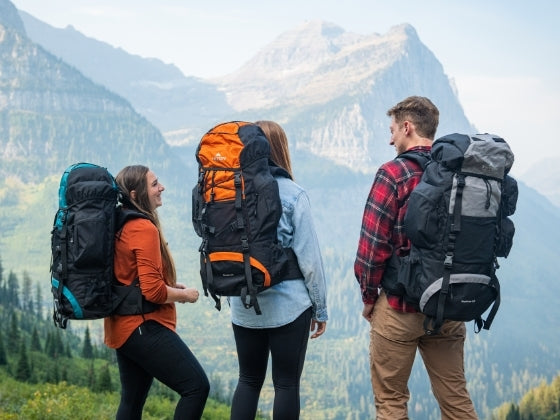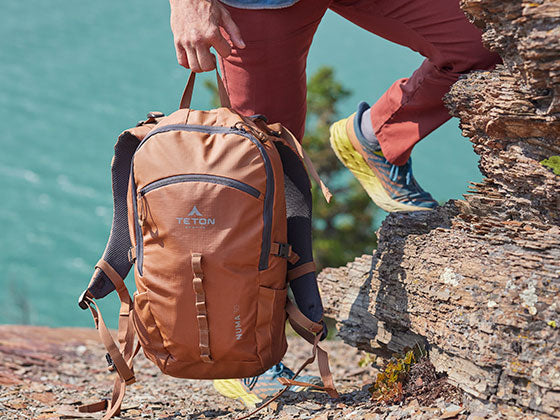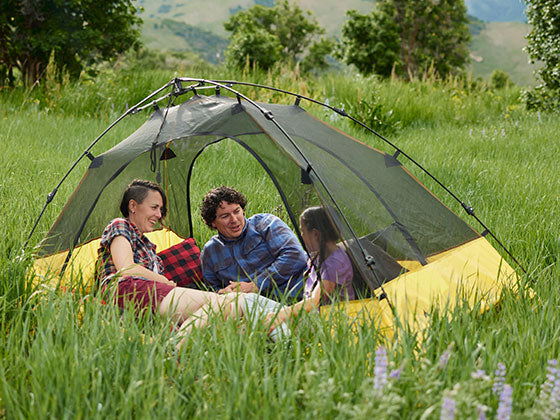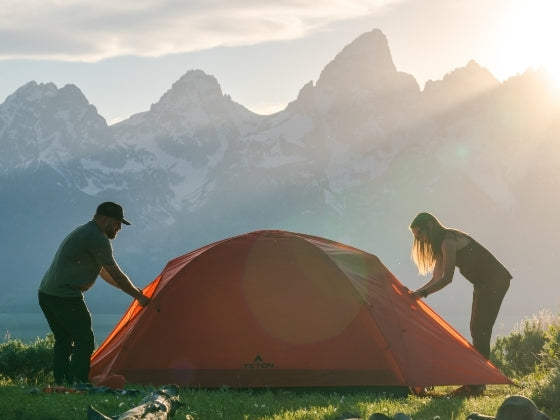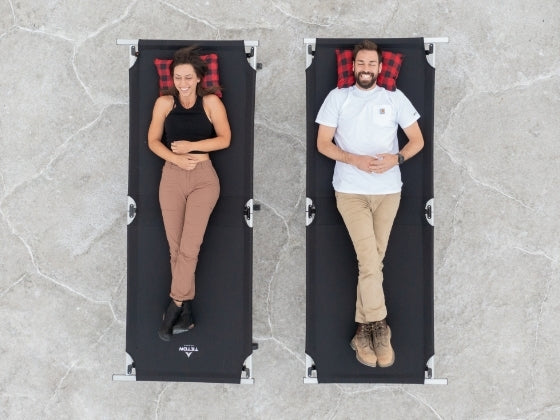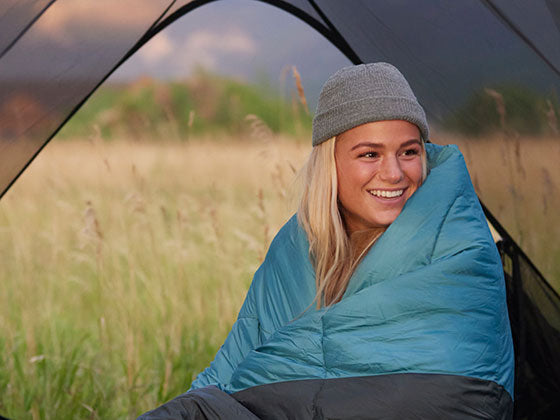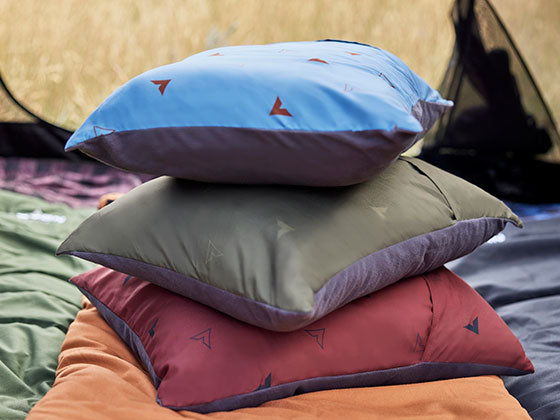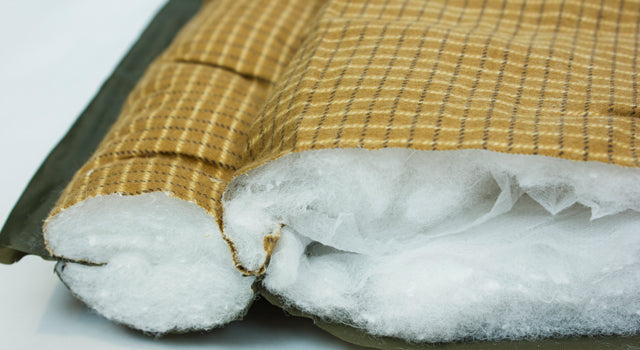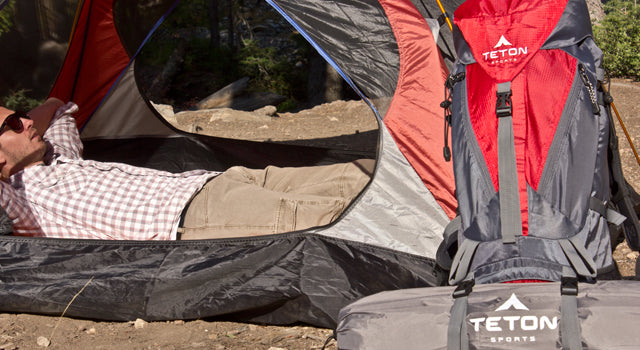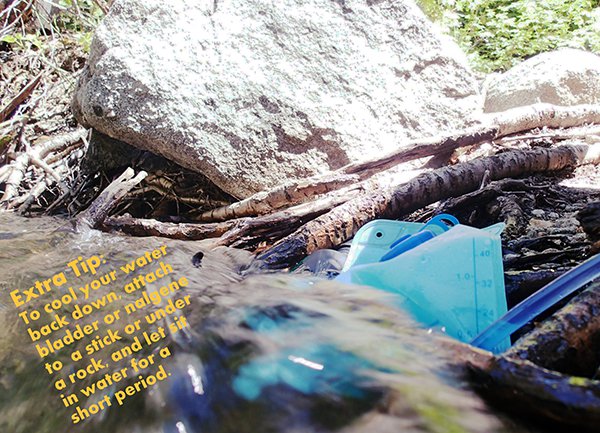When roughing it what we really want is a chance to be one with nature while awake. But when we sleep, we need to rejuvenate for more roughing it the next day. A sleeping bag needs to keep us warm in spite of the lack of insulation provided by the great outdoors. How is this done? First, let’s consider some basic science. Heat gained = Heat lost. Everything is subject to this phenomenon. To be specific to our discussion—if a person were to lie down in their tent with no sleeping pad or bag, equilibrium of temperatures between the person and the ground would be the eventual outcome. Also, the air circulating around their body would take its fair share of radiant heat. Now introduce your insulators—the sleeping bag, atop a great sleeping pad, and you can beat Mother Nature’s game.
How is it done? A sleeping bag traps air and keeps it from circulating. This "dead air" around your body is warmed by the heat created by your body's metabolism. The bag forms a barrier between this air and the colder ground or outside air. Smaller spaces warm up faster and retain heat more efficiently.
What’s in the Bag? Different insulation types have their own pros and cons. The kind of camping you’re doing will help you determine which kind is best for your needs. Bargain basement synthetics are good for some summer camping or sleepovers in the backyard. If you want to take the family up into the mountains or out in the bush, you’re going to want something a bit more high tech. And if you’re a backpacker headed into cold conditions, then only the highest-end synthetics or down are for you.
Is Down the Best? Down (under feathers found on geese or ducks) is Mother Nature’s perfect insulator—as long as it stays dry. Wet down will not insulate you well and it takes a long time to dry out. But if you know you can keep it dry, there’s really nothing better for packing-in-your-gear type camping trips. It will keep you warmer pound for pound than any synthetic available, though manufacturers are getting close. It is also more expensive than synthetic options.
What About Synthetics? There are nearly as many types of synthetic fiber fills for sleeping bags as there are major manufacturers who design them. If you buy a synthetic filled bag, you want something that will dry quickly and even continue to keep you warm (though perhaps less effectively) when wet. Here’s a cross section of a fiber fill that will condense and turn to mush when wet. This next picture shows a cross section of four-channel fill that is less likely to collapse and is also coated with a water resistant agent. TETON Sports sleeping bags are always filled with this second, more durable insulation.
Anything Else? Also, multiple layer construction, extra fill in areas around the extremities or highly compressed spaces, and shoulder and zipper baffles will all aid in the effort to stay warm. Sometimes, these features can mean the difference between six to eight degrees when compared to bargain bags. Multiple layer construction will help to keep the fill evenly distributed throughout the bag and reduce cold spots. It also provides more durability in wear and tear. Our extremities are the culprits that release heat most from our bodies. If a sleeping bag’s design includes extra fill in the foot box, your feet will stay warmer longer. Another favorite feature found in TETON sleeping bags is the baffles around the shoulders, head and zippers of many of our bags. This extra bit of insulation offers added protection from cold at the most vulnerable ventilation points.
What Helps? There are a myriad of things you can do yourself to help speed up the heating process and maintain warmth. Some of them include: - Doing a little exercise before you get in your bag, such as jumping jacks, push-ups, or sit-ups. - Wear a layer of dry clothing: a hat, a pair of loose warm wool or fleece socks, and a layer of long underwear. - As previously mentioned, use a good sleeping pad. Air filled pads don’t insulate as well as foam filled pads - Some campers will place a hot water bottle in extra clothing and stuff it in their sack before climbing in at night. Then your body doesn’t have to work as hard to get the air warm. - Shake your sleeping bag out. Any insulation will perform better if you shake out some of the compression it has undergone in the packing process. Get Outdoors! TETON Sports

